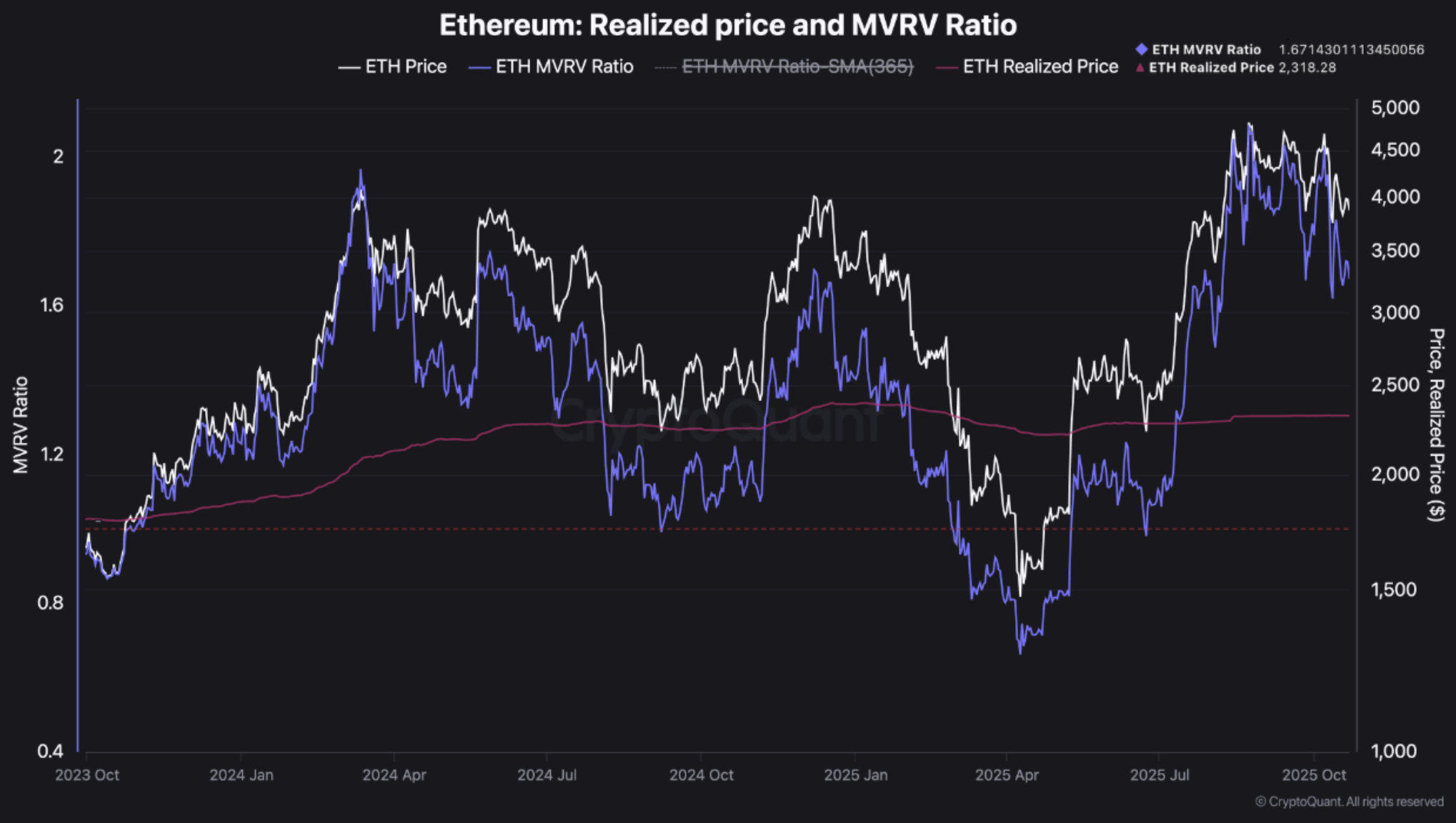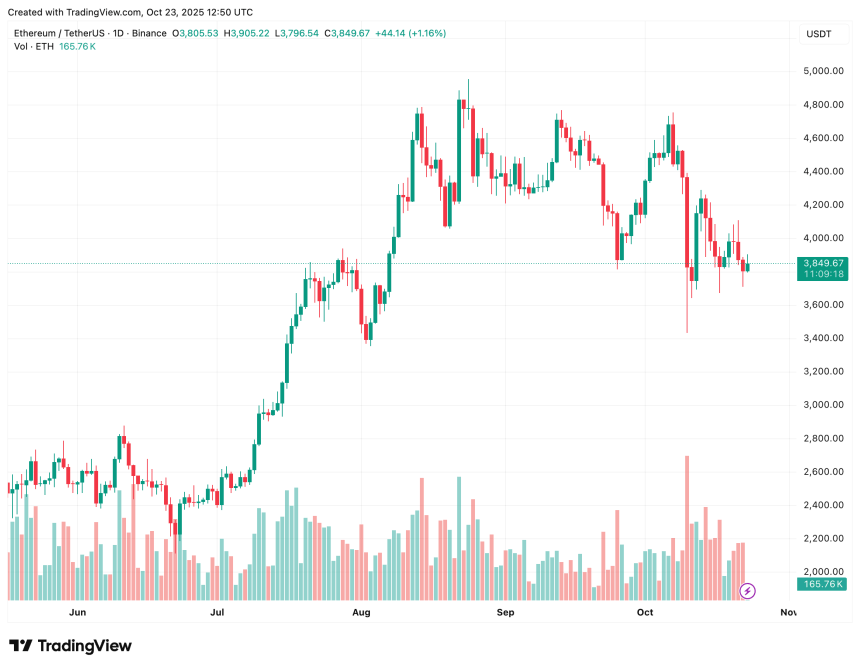Ethereum (ETH), the second largest cryptocurrency by market capitalization, continues to trade slightly below the psychologically important price level of $4,000, following the sharp pullback on October 9, which saw the digital currency test support at around $3,435.
Ethereum remains above the realized price – Upward momentum soon?
According to a CryptoQuant Quicktake article by contributor TeddyVision, Ethereum is trading above its realized price, at around $2,300. Calling the price level a “fundamental support zone,” the analyst said that historically, any decline below this level has marked a capitulation phase.
Related reading
For the uninitiated, the realized price represents the average cost base of all ETH holders, calculated by dividing the total value of all ETH at the time of their last move on-chain by the current circulating supply.
The realized price effectively shows the “true” average price paid by investors, serving as a key indicator of whether the market is in profit or loss. As long as ETH trades above the realized price, the market structure will likely remain bullish.
The analyst also highlighted Ethereum’s market value to realized value (MVRV) ratio. Notably, ETH holders are currently making, on average, a 67% profit compared to their cost basis. This measurement gives two major indications on the current market.

First, it shows that even though the market is profitable, it is still far from “overheated” levels. Second, it indicates that market participants are confident about the upward momentum of the market, but not exactly euphoric.
To explain, the MVRV ratio compares the market value of an asset to its realized value. A higher MVRV indicates that holders are sitting on larger unrealized profits – often signaling potential overvaluation – while a lower MVRV suggests undervaluation or market fear.
Additionally, TeddyVision noted Ethereum’s reaction to the realized upper price band, which currently sits around $5,300. The analyst noted:
The price pulled back before reaching the “overheating zone. This is not a reversal – it is a consolidation phase after distribution, a healthy cooldown without structural damage.
Finally, one-off flows of ETH to crypto exchanges are also slowing, suggesting that the digital asset’s next step will likely depend on new liquidity and not leverage. To summarize, Ethereum is slowly moving from the distribution phase to the consolidation phase.
Is now a good time to buy ETH?
While providing reliable future predictions in the crypto market remains a difficult task, new on-chain and exchange data indicates that ETH is regaining its bullish momentum. For example, Binance funding rates recently hinted this ETH could reach $6,800.
Related reading
Likewise, ETH reserves on exchanges continue to decline at a rapid rate. Earlier this month, ETH offering on exchanges hit a multi-year low, increasing the likelihood of a potential “supply crunch” that could significantly increase the price of ETH.
That said, crypto analyst Nik Patel recently warned that the ETH price correction may not be completely over yet. At press time, ETH is trading at $3,849, up 0.3% in the last 24 hours.

Featured image from Unsplash, charts from CryptoQuant and TradingView.com




